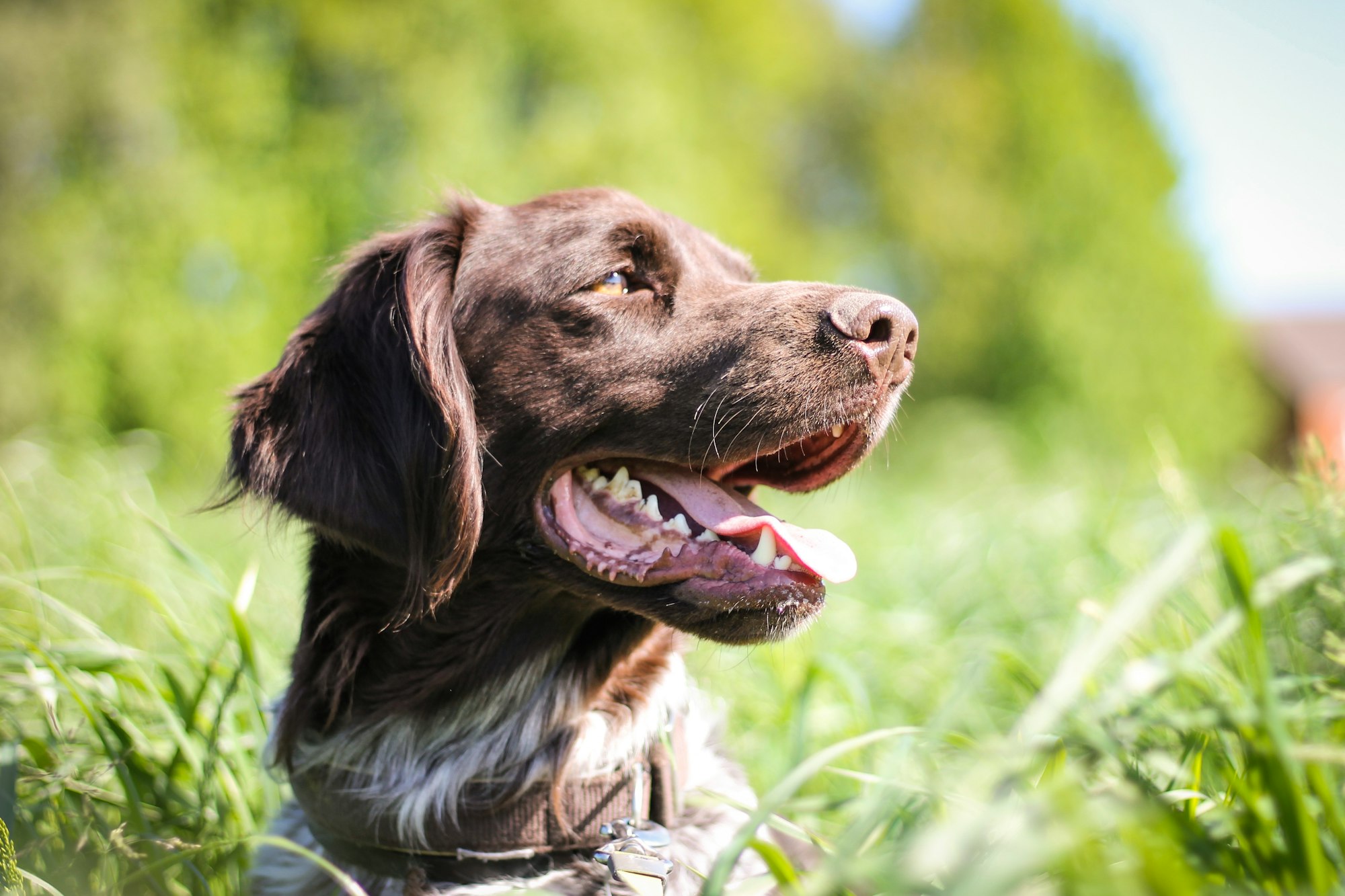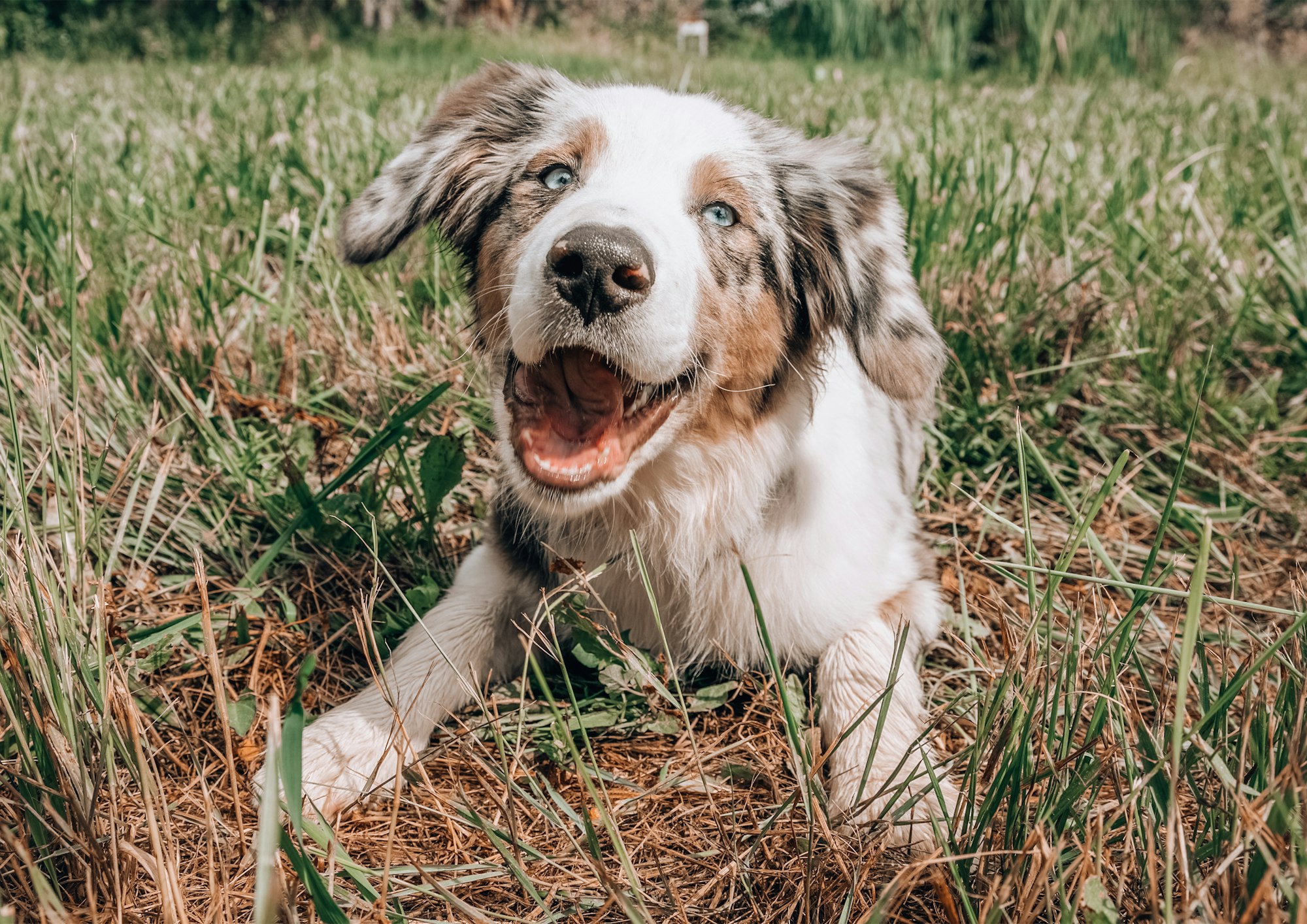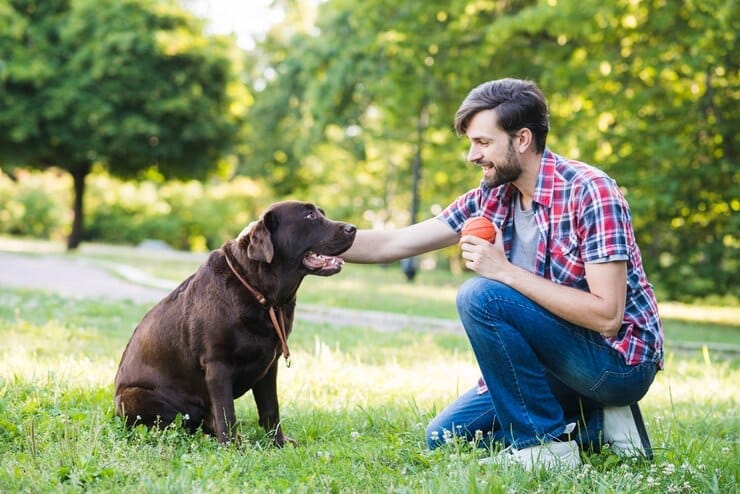Dogs not pooping outside can be a frustrating problem for pet owners to deal with. Understanding the reasons behind this behavior is crucial in finding a solution. There could be various reasons why your dog won't poop outside, including fear or anxiety, health issues or discomfort, and lack of proper training. Recognizing and addressing these factors is essential in helping your dog develop the desired behavior.
By understanding the reasons behind your dog's reluctance to poop outside and implementing effective strategies, you can help your furry friend overcome this challenge and establish proper bathroom habits.
Helping Your Dog Poop Outside with the Fi Dog Collar
Struggling to get your dog to poop outside? Understanding the reasons behind this behavior is crucial. Whether it's anxiety, a preference for indoor spaces, or health issues, it's essential to identify and address the root cause.
- Establish a Routine: Consistency is key! Take your dog outside at the same times each day to help them understand the routine.
- Positive Reinforcement: Reward your dog with treats and praise when they poop outside to encourage the desired behavior.
- Safe Outdoor Environment: Create a comfortable, safe outdoor space where your dog can feel at ease.
The Fi Dog Collar helps with tracking your dog's activity, letting you monitor their movements outside and establish a consistent bathroom routine. Plus, with GPS tracking, you can ensure they stay within safe boundaries. Visit TryFi.com to learn more and help your furry friend overcome their bathroom challenges!
Understanding Why Your Dog Won't Poop Outside
There can be several reasons for understanding why your dog won't poop outside. It could be due to a medical issue. If your dog is experiencing digestive problems or constipation, understanding why they won't poop outside is important. It is important to consult with a veterinarian to rule out any health concerns.
Understanding why your dog won't poop outside may also be because they have developed a preference for certain surfaces or locations. Dogs are creatures of habit, and they may feel comfortable only going in familiar spots. This could be because they were previously scolded or had a negative experience in new environments.
Anxiety or fear can play a role in understanding why your dog won't poop outside. If your dog has had traumatic experiences or is generally anxious, they may struggle to relax enough to eliminate waste outside.
To address this issue, try gradually exposing your dog to different outdoor environments and rewarding them when they successfully poop outside. Establishing a consistent routine and providing a calm and stress-free environment are key to understanding why your dog won't poop outside.
Pro-tip: Remember, patience and positive reinforcement are key when working with your dog. Understanding why your dog won't poop outside will help you address the issue and cultivate a healthier elimination habit.

Indoor Territory Preference
Dealing with dogs not pooping outside often involves the challenge of indoor territory preference. Dogs that have this preference find comfort and security in relieving themselves within their familiar indoor spaces. This behavior can stem from various factors, including anxiety, fear, or a liking for the scent and texture of indoor surfaces.
To gain a better understanding of the indoor territory preference, let's refer to the following table:
| Reason | Description |
| Anxiety | Dogs may experience anxiety or stress when outdoors due to unfamiliar noises, people, or other animals. |
| Fear | Some dogs may be frightened by certain outdoor elements, like loud noises, cars, or unfamiliar surroundings. |
| Familiarity | Dogs develop a preference for the scent, texture, and cleanliness of indoor surfaces, making elimination indoors more appealing to them. |
In order to tackle this challenge, it is important to gradually introduce your dog to outdoor environments. Begin by going on short walks in low-stress areas and slowly increase the duration and exposure to different stimuli. Providing positive reinforcement, such as treats or praise, when your dog successfully eliminates outside can also help encourage the desired behavior.
Remember, patience and consistency are crucial in your training approach. If your dog continues to prefer the indoor territory despite your efforts, seeking guidance from a professional dog trainer or behaviorist may prove beneficial.
By understanding and addressing the indoor territory preference, you can assist your dog in developing better bathroom habits and ensure a cleaner and more hygienic living environment.
Tips for Getting Your Dog to Poop Outside
Having trouble getting your furry friend to do their business outside? Don't worry, we've got you covered! In this section, we'll provide you with practical tips and tricks to encourage your dog to poop outside. From establishing a solid routine and schedule to creating a positive reinforcement system, we'll guide you through the process step by step. Plus, we'll show you how to ensure a comfortable and safe outdoor environment for your pup. Say goodbye to indoor accidents and hello to hassle-free potty time!
1. Establish a Routine and Schedule
To establish a routine and schedule for your dog to poop outside, it's important to follow these steps. First, determine the ideal times that work for your dog based on their age, size, and individual needs. Once you have identified these times, take your dog outside on a leash to the designated spot where you want them to poop. It's crucial to choose a consistent location that your dog can associate with this behavior.
While outside, make sure to stay with your dog and be patient. Give them enough time to sniff around and find their preferred spot without any distractions. To signal to your dog that it's time to eliminate, you can use a verbal cue, hand signals or a command like "go potty" or "do your business." Make sure to repeat this cue consistently throughout the process.
In case your dog doesn't eliminate within a reasonable amount of time, don't punish or scold them. Instead, take them back inside and try again later. Punishment can create anxiety or fear related to going outside. It's important to be understanding and patient with your furry friend.
Positive reinforcement is essential during this process. When your dog successfully poops outside, immediately reward them with praise, treats, or their favorite toy. This positive reinforcement will help them understand that they've done the right thing.
Remember, it takes time and consistency to establish a routine and schedule. Continue to reinforce good behavior and be patient with your dog. With practice and positive reinforcement, they will eventually learn to consistently poop outside.
2. Create a Positive Reinforcement System
- Creating a Positive Reinforcement System: To encourage your dog to poop outside, it is important to create a positive reinforcement system. By using treats as a reward when your dog successfully poops outside, you can associate this behavior with a positive experience.
- Verbal Praise and Treats: Along with treats, make sure to provide verbal praise to reinforce the desired behavior. Saying phrases such as "good job" or "well done" will further motivate your dog.
- Establish a Designated Area: It is essential to designate a specific spot in your yard where you want your dog to poop. By consistently taking them to this spot, you reinforce the behavior and make it easier for your dog to understand their bathroom routine.
- Consistency with a Schedule: Dogs thrive on routine, so establish a regular schedule for bathroom breaks. Taking your dog to the designated spot at the same times each day will increase the likelihood of success.
- Patience and Consistency: Training your dog may take time, so it is important to be patient and consistent. Stick to the routine and continue using positive reinforcement to reinforce the desired behavior of pooping outside.
By following these steps and creating a positive reinforcement system, you can effectively train your dog to poop outside and strengthen the desired behavior. Remember to be patient, consistent, and provide rewards to enhance the learning process.
3. Ensure a Comfortable and Safe Outdoor Environment
- Create a designated poop area in your outdoor space to ensure a comfortable and safe outdoor environment for your dog.
- Ensure that the poop area is clean and free from any potential hazards or distractions to maintain a hygienic and safe space.
- Remove any sharp objects, toxic plants, or other items that may cause discomfort or harm to your dog, making the area even more comfortable and safe.
- Provide shade or shelter in the poop area to protect your dog from extreme weather conditions and ensure their comfort.
- Make sure the area is well-lit, especially if you plan on taking your dog out at night, to guarantee a safe and comfortable environment.
- Keep the surroundings quiet and peaceful to minimize any potential stress or anxiety for your dog, ensuring a comfortable and safe outdoor environment.
- Regularly clean and maintain the poop area to ensure a hygienic environment for your dog, contributing to their comfort and safety.
- Consider using a grassy or soft surface in the poop area to make it more comfortable for your dog to relieve themselves and maintain a safe outdoor environment.

When to Seek Professional Help
If your dog is consistently refusing to poop outside, it may be time to seek professional help. A qualified veterinarian or animal behaviorist can provide valuable insights and guidance to address this issue. Seeking professional help is especially necessary if your attempts to resolve the problem on your own have been unsuccessful.
Professional help can offer a fresh perspective and specialized knowledge to identify the underlying cause of your dog's reluctance to poop outside. They will assess your dog's behavior, diet, and health to determine if any medical conditions or behavioral factors are contributing to the problem.
It is essential to seek professional help when to seek professional help if your dog's refusal to poop outside is causing significant distress or impacting their overall well-being. Professionals can provide tailored strategies and advice to help you and your dog overcome this challenge, ensuring a healthier and happier lifestyle for both of you.
Remember, seeking professional help doesn't mean you've failed as a dog owner. It is a proactive step towards finding the best solution for your dog's needs. With guidance from experts, you can work towards a resolution and cultivate a positive outdoor experience for your furry friend.
Frequently Asked Questions
Why won't my dog poop outside?
There are several factors that can contribute to a dog not pooping outside. Some reasons include unfavorable weather conditions, a habit of using the house as a bathroom, knowing they'll have to go inside after pooping, distractions, history of staying in a kennel, not liking the feel of the outdoor surface on their paws, and medical issues.
What should I do if my dog has medical problems and won't poop outside?
If your dog has medical problems and is not pooping outside, it is important to take them to the vet. Dogs should pass bowels at least once per day, so any abnormalities should be checked by a professional.
Can puppies be potty trained to poop outside?
Yes, puppies can be potty trained to poop outside. However, they may initially need to go to the restroom inside the home. It can be more challenging to teach an older dog to use the outdoors as their restroom.
What strategies can help my dog poop outside?
There are several strategies that can help a dog poop outside. These include potty training, using enzymatic cleaner to prevent them from pooping in the same spot, providing weather gear, taking them to the vet if there are odd symptoms, offering different pooping surfaces, finding a quiet environment, and using crate training.
Can crates help with potty training a dog to poop outside?
Yes, crates can be used to help potty train a dog and give them a sense of security. Dogs prefer to poop away from where they sleep and play, so using a crate can help reinforce this behavior.
Can most dogs be taught to use the outdoors as their restroom?
Yes, with patience, positive reinforcement, and love, most dogs can be taught to use the outdoors as their restroom. It may take time and extra training, but it is possible to establish this behavior.

